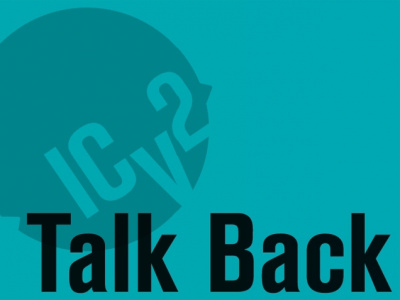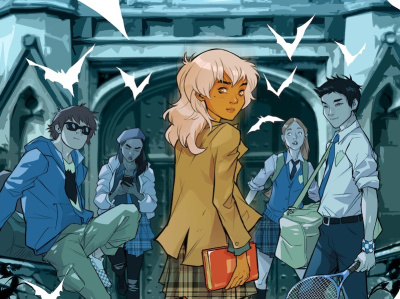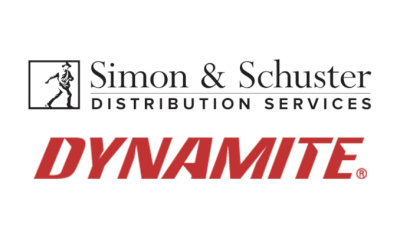 Talk the Talk, Walk the Walk is a weekly column by Kendall Swafford of Up Up Away! in Cincinnati, Ohio. This week, Kendall talks about underestimating the percentage of new customers and using MOBY.
Talk the Talk, Walk the Walk is a weekly column by Kendall Swafford of Up Up Away! in Cincinnati, Ohio. This week, Kendall talks about underestimating the percentage of new customers and using MOBY.So, correct me if I’m wrong (please!), but I think most of us, comic book retailers I mean, operate under the assumption that we know most of the people that shop at our stores. Obviously, everyone’s situation is different; maybe you don’t spend that much time on the sales floor. I’m talking to (and about) the guys that do, whether it’s you, or one of your managers or one of your sales clerks, generally that person knows or at least recognizes most of the people in your store. Or do they?
I used our Point-Of-Sale system to reinforce a feeling I had. Excepting Free Comic Book Day (which can skew your statistics in a myriad of ways) I’d been noticing more and more people in my store that I didn’t know. At first, it was simply anecdotal. This had all started a few weeks ago with the thought “It sure seems like I’m seeing more new people lately.” So I had a minute between coats of paint (I’m currently repainting the interior of the store), so I decided to see if I was right. Or not.
Because we have a loyalty card program, we scan each customer’s U-Card before each transaction. MOBY, our POS system classifies unknown customers as “anonymous.” While there are a handful of customers that don’t participate, I will look up their customer account anyway, simply for transaction history if nothing else. Anyone else gets entered as “Anonymous.” Looking at the first three months of the year, 87% of our transactions were from regular/semi-regular/known customers, and 13% unknown/anonymous/new customers. That’s about where I would have guessed it to be. I think we all assume that’s the nature of this industry. Maybe a downtown location sees a different pattern, I’m sure a college vicinity store sees more customer turnover, and a store with immediate expressway access or in a high tourism city like New York or Washington DC sees different numbers than I do.
As I mentioned, I had the sense that new people were coming in. So I ran the numbers for April and May, minus Free Comic Book Day. The April number of anonymous customers jumped to 33%, while since May 2nd, it’s popped to over 41%! Why? I dunno! We’re seeing a few people from Free Comic Book Day return since, but only a few. I’ve had a few people grow frustrated with my closest competitor’s stupidity (their words, not mine,) but only a few. School’s not out yet and we haven’t made any changes in our advertising.
My point to all of this is two-fold. One, maybe we don’t know what we think we know. If you had bet me that this month’s percentage of anonymous customers was north of 40%, I’d have laughed at you. But our (or at least my) erroneous assumptions affect an awful lot of things, including how many products are merchandised! We make decisions such as putting last month’s issue of Green Lantern in a sea of long boxes designed to house many comics, not necessarily alongside other Green Lantern merchandise. Regular customers know how and where to look, but if 4 out of 10 people in your store are new it could potentially force some changes if these numbers continue. How, where and why certain displays exist should be influenced by these numbers.
Secondly, is point-of-sale. This week marks my first anniversary with MOBY. We were on ComTrac for several years, and I hated every excruciating moment of it. MOBY, while not perfect, gives me so much information. I’m not the statistics junkie that Brian Hibbs is, but the information I get is vital to my profitability. I’m not writing this to simply endorse MOBY, but the last 12 months have been a terrific experience. I’m sure many single-store operators like myself think they don’t need a POS system. I have a single 2500 sf store, and I’m in my store almost all day, every day. And I still see surprises every day in the data that MOBY gives me. Out-of-stocks, best sellers that snuck up the charts, exhaustive sales data about your customers, and on and on and on. The question I get most often from my customers? “Did I buy this?” It’s a question I can answer easily, and only in this business are people actually glad we collect that kind of data, because it’s another tool that enhances the shopping experience. Some customers even ask for end-of-year reports on everything they purchased. Need a complete inventory report for tax time? Yeah, we got that.
We’re receiving TP/HC/GNs at an alarming rate per week. Which ones are performing? Which ones are collecting dust? Any POS system worth its salt can answer all of these questions, and a thousand other ones. I looked at dozens of POS systems before I purchased MOBY, both comic store specific as well as more generic systems. ComTrac was in place when I purchased this store in ’06, and it left a lot to be desired. It’s time to move beyond the cash register, and this is obviously not the best time for everyone to make capital investments, but ya gotta do it. Loyalty programs, gift cards, layaways, customer histories, inventory control & management and security are just a few reasons to get Point-of-Sale. If not MOBY, then something else. I’m happy to talk shop with any retailer that’s curious about my experiences with MOBY, ComTrac and a few others. We have tens of thousands of different items in stock at Up Up & Away, and the sharpest of minds couldn’t keep up with everything without a modern, robust point-of-sale system. It’s at least as important to your business as you are.
The opinions expressed in this column are solely those of the writer, and do not necessarily reflect the views of the editorial staff of ICv2.com.







